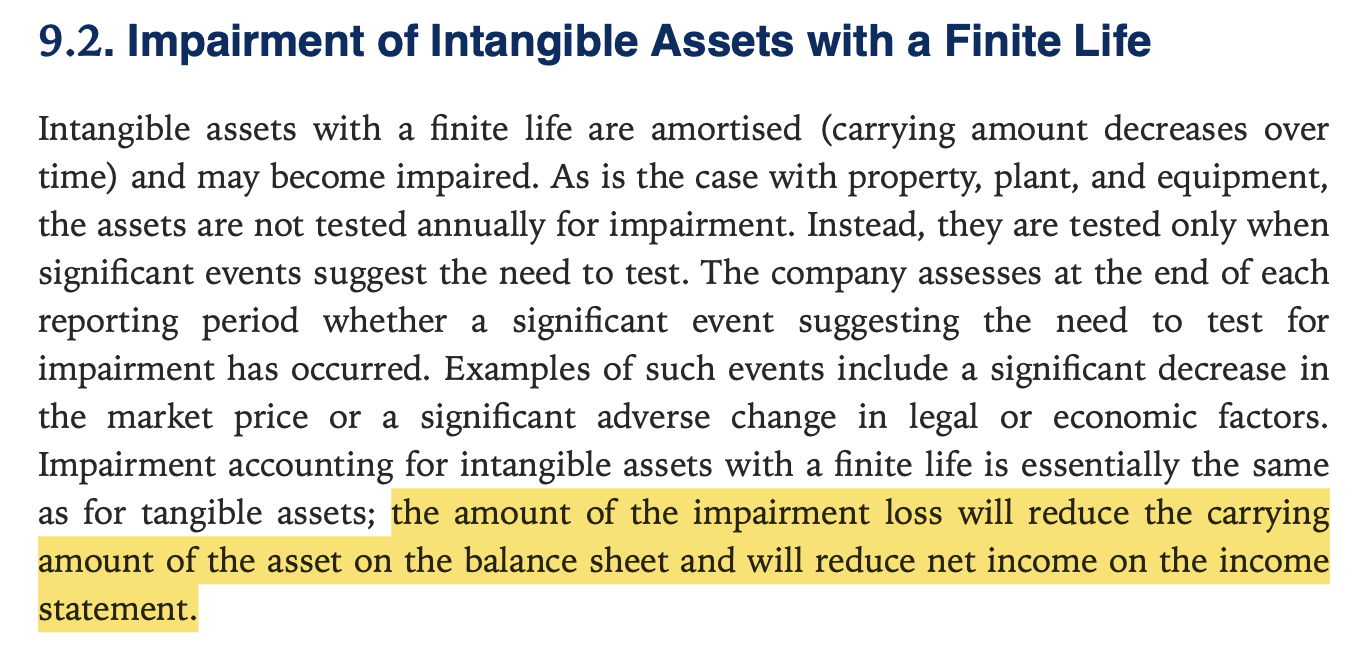NO.PZ2016012102000126
问题如下:
The patent of Firm A was impaired last year. Net income of Firm A in this year will be:
选项:
A.no change compared to not taking the impairment charge.
B.higher compared to not taking the impairment charge.
C.lower compared to not taking the impairment charge.
解释:
B is correct.
Patent is an example of intangible asset with finite useful lives, which should be amortized. Since the impairment charge lower the carrying value of the patent, the amortization expense in this year is reduced. This will increase the net income of the firm.
考点:无形资产摊销
题目说的是last year发生减值,问的是current year的情况
它的意思是说有一个finite-lived identifiable intangible asset(其实考察的是这个无形资产需要摊销),如果进行了减值之后的NI和没有进行减值的NI比较会是怎样的。
如果减值了,那么无形资产的账面价值就下降,那么需要摊销的金额也下降,所以以后的NI相对于没有减值的NI会上升。

看了其他同学的提问和助教的回答,我知道这题问的是【去年减值,今年的NI】和【去年不减值,今年的NI】谁大谁小。
以下是我的疑问:
【疑问一】
- 假设NI是2000元,机器carrying value是100元,预计使用寿命是10年,残值是0,那么在不减值的情况下,我今年得折旧10元,忽略各种销货成本、利息、税等费用,所以我得从NI 2000元里扣除10元。
- 我去年给机器减值到了50元,残值依然是0,从今年开始我每年就只对它进行折旧5元,今年的NI就是2000元里扣除5元。
- 上面两点是我的理解,这样对吗?
【疑问二】
- 原版书写着the amount of the impairment loss will reduce net income on the income statement,这话乍看之下没有问题,可是用这话来解这道题就解错了。这句话跟这道题的联系在哪?或者是根本没有联系?



